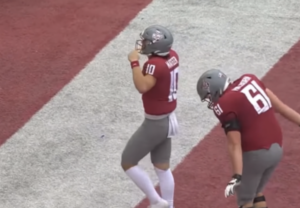PULLMAN, WASH – As 2022 progresses, some people are calling for stringent COVID-19 mitigation efforts like mask-wearing to lessen.
“If we’re gonna get it, there’s already different ways we’re gonna get it other than wearing masks,” WSU student Dani Reeves said.
Lessening these restrictions means society is shifting from a pandemic to an endemic, said Guy Palmer, regents professor of pathology and infectious diseases.
While Palmer said he believes the U.S. is heading toward that endemic phase, other parts of the world, like China, are not.
“Their societal decision is to treat this still as a pandemic that can be eliminated or eradicated,” he said.
On the flip side, Palmer said countries like the U.S. are learning to live with the disease instead, since the risk of COVID-19 will never go away.
Doug Call, School for Global Health regents professor, said there are certain similarities between the COVID-19 pandemic and the great influenza pandemic of 1918, which took about three years to be considered an endemic.
“COVID is likely to follow the same pattern,” he said.
Call said a big step toward a COVID-19 endemic is the development of a vaccine that protects against every single strain. However, there is no timeline for when that vaccine will be available to the public.
As far as mandates like mask-wearing go, he said it is only a matter of time before those start to dissipate.
“There’s a point where there’s not enough problem to worry about this and there’s more problem with trying to enforce things that people aren’t wanting to do,” Call said.
Both Call and Palmer said this transition from pandemic to endemic will continue unless a new strain emerges that is more serious than the omicron variant.


